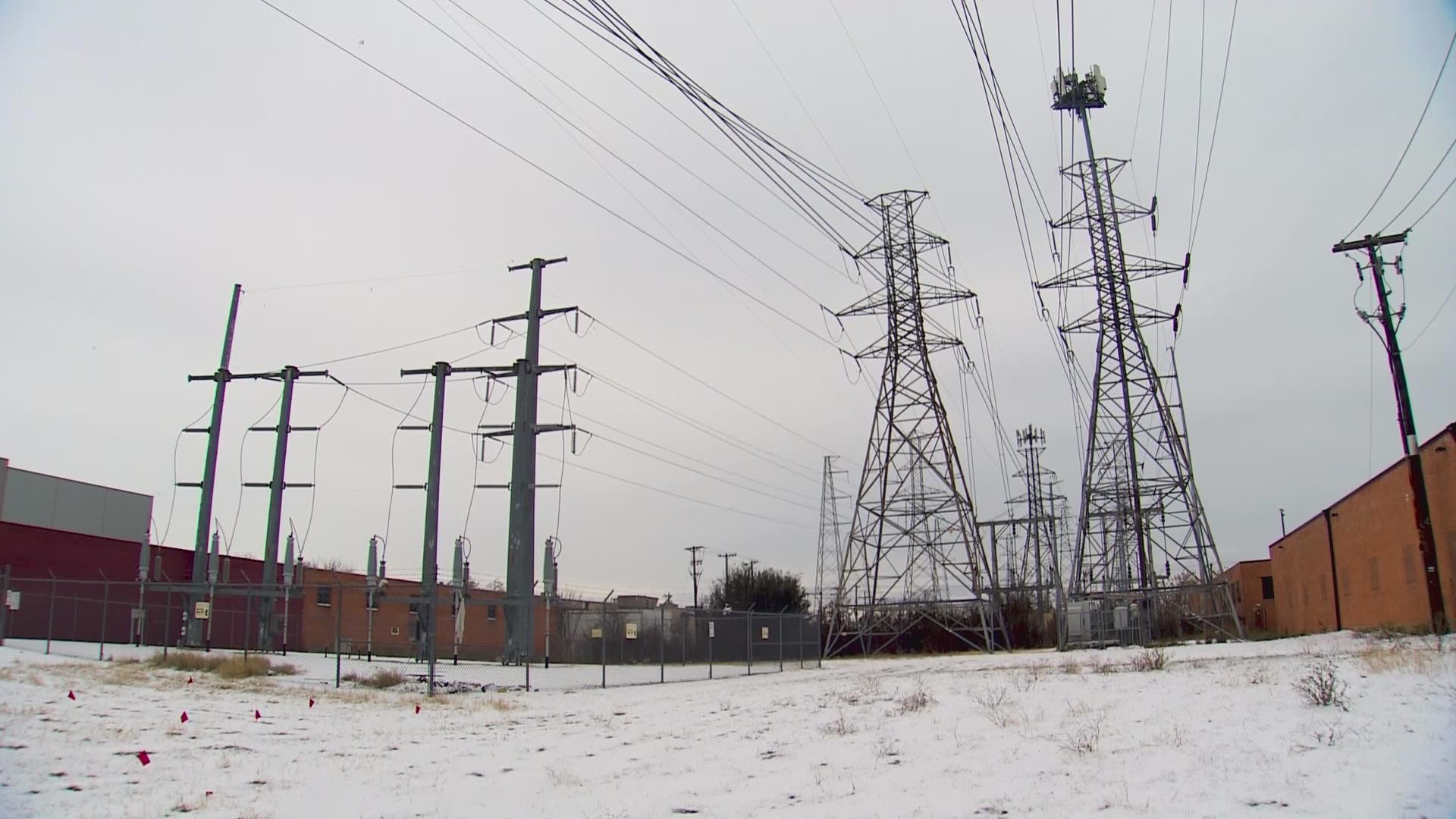FORT WORTH, Texas — In the days before North Texas was covered in snow and ice, families across the region flooded grocery stores and gas pumps.
As meteorologists predicted, the storm was not nearly as cold, widespread or long-lasting as the February 2021 blast that killed 246 people when Texas’ electrical grid failed and left millions in the dark.
Doug Lewin, an energy consultant and head of Stoic Energy, says the grid wasn’t truly tested this week.
“The grade I would give this is incomplete,” he said. “It’s just a very low bar to clear.”
There are still important takeaways, though.
In a Friday press conference of state officials, ERCOT CEO Brad Jones said power plants didn’t report any major outages throughout the storm.
“Our generation and transmission partners in the grid have operated admirably,” Jones said.
“You want a bigger test before you say everything’s better,” Lewin said. “But I’ve said all through this year I actually thought the PUC did a pretty good job with that winterization rule.”
Another positive, renewable energy sources did extremely well. Wind production was more than 50% higher than expected.
“Renewable energy, especially wind, did phenomenally well last week and really helped Texans and the Texas policy makers who don’t give it a lot of love,” Lewin said.
Several problem areas go exposed this week, though.
Natural gas producers have not had to winterize and saw production plummet 20 percent in the Permian Basin when temperatures dropped, according to Platts Gas.
“Still flashing red lights on the gas supply system,” Lewin said. “If the storm have covered the whole state, and if we had freezes in both the Permian and the Eagle Ford Shale, we might’ve seen 40, 50, 60 percent reduction drops like we saw one year ago.”
A week ago, ERCOT projected Texas to far surpass its winter demand record with an estimate ranging from around 73 gigawatts to more than 75 GW. Instead, the state never got near that mark, missing the projection by about 5 GW, roughly enough power for 3.5 million homes. Last year, ERCOT had the opposite problem, underestimating demand.
In Friday’s press conference, PUC chair Peter Lake said they were using the most extreme model to forecast demand.
“A lot of people were staying home from work as we asked them too, schools were closed, so there are a lot of buildings out there that don’t need power this morning,” Lake said.
Lewin says the focus now should be on making home heating more efficient to lower energy demand and make sure standards prepare the grid for increasingly common extreme weather events.

